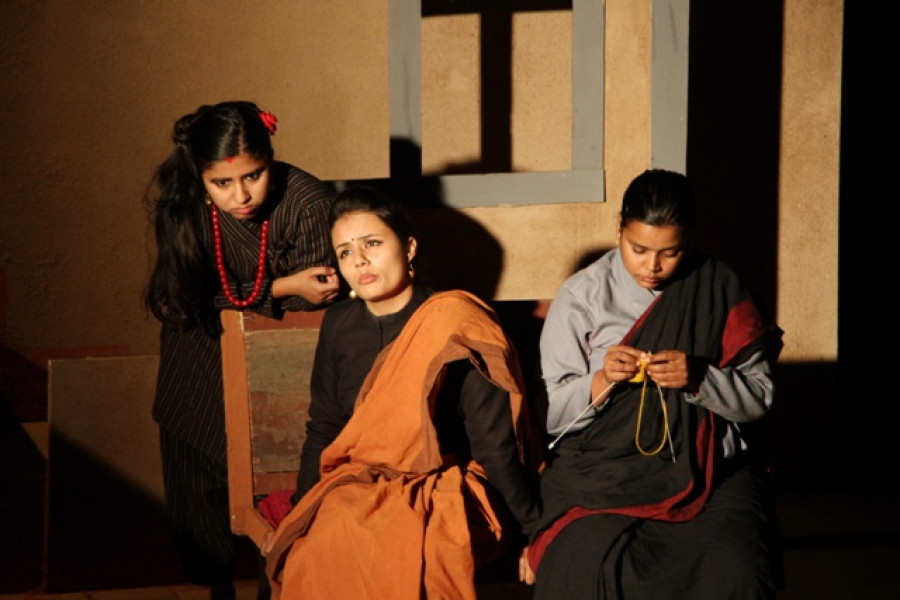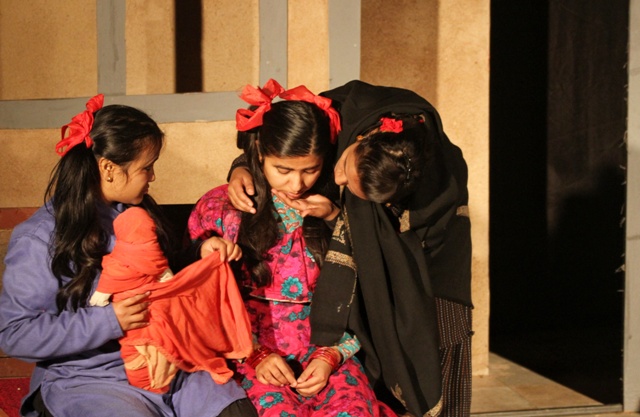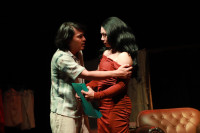Theater
Not enough spark in ‘Bhus ko Aago’
The play, currently being staged at Shailee Theatre, has stellar performances but a tottering plot that fails both the actors and the audience.
Ankit Khadgi
In one particular scene, as Urmila enters a two-storey house, her mother is complaining about her to her cousin Radha. Her mother isn’t happy that Urmila, who is in her mid-20s, has no plans to reconcile with her husband. The husband in question, who never came back to take her and their daughter, has already re-married. But in Urmila’s mother’s eyes, Urmila was equally at fault for the marriage ending. Her views were too progressive, she says. All Urmila wanted was higher education.
Set in the 1950s, Urmila is portrayed as a ‘rebellious’ character, trying to break free from social restrictions. In her introductory scene itself, the audience is shown her personality, as she steps onto stage after finishing a meeting—an unlikely situation for a woman to be in, particularly in those times.
The theatre production of Bhus ko Aago by Shailee Theatre tells the story of Urmila, and other women like her, from the time when democracy was first introduced in the country. The story revolves around the female characters’ thought processes: how they feel about society, the political changes that were unfolding and their relationship with their loved ones. It is also about Urmila’s journey of dealing with her past. Directed by Nawaraj Budhathoki, the story has been borrowed from the short story of the same name by litterateur Govinda Bahadur Malla ‘Gothale’.
The play, though set early in the history of political change in Nepal, reflects the struggles of women in the present-day as well. And it is unclear whether it was the intention of the theatre group or that’s just how the play came to be, but the similarities in the women’s struggles that are juxtaposed against two completely different eras are ironic.
The audience may find the characters exasperating at times due to their belief in themselves for having a lack of agency. Some could say the sentiments might be justified as the play was set some 60 years ago when women could hardly take their own decisions. But after a short reflection, the audience is forced to ask, how much of this has changed since then?

With the all-female cast, every character leaves their own impression on the audience but it is Shanti (Urmila’s cousin) who stands out because of her self-confidence and strong attitude. Shanti is in her teens and with age, there is a rebellious attitude in her. She doesn’t understand the patriarchal values of society and calls them stupid. In a scene, when Urmila is asking if she looks old and is doubting that her husband left her because of her appearance, Shanti shuts her down and tells her that such things don’t matter and encourages her to move on and focus on her studies.
Despite having such strong characters, the script is flimsy and weak. The story highlights the plight of women and their sufferings and also is a commentary on patriarchy, but the director loses the sense of plot as well as pace. Over the duration of 80 minutes, the repetitions in dialogue and setting could make the audience impatient.
Despite the shortcomings, the actors deserve some admiration because they give a stellar performance. Almost all the characters of the play come across as relatable, like people we may
have known for a long time. We all have seen someone like Urmila who wants to make her own identity, or Radha, who blames herself for the death of her husband. Even without a strong script, to be able to flesh out individual characters isn’t an easy task, but that hasn’t held back the actors from giving a great performance.
As for the setting, the use of a traditional Newar home in Kathmandu during the 50s works just right according to the story. The dhalucha, a traditional oil lamp, hanging in the verandah of the house, may be a minimalistic prop but it succeeds in giving off the ‘old-world’ feeling. Similarly, the costumes and background music are also appropriate as per the time period.
It is evident that a lot of thought has been put into bringing Gothale’s story into life, but if the theatre group had brainstormed more and built a tighter script, it could have been a wholesome experience.
The play is being staged at Shailee Theater, Ratopul, until December 16 at 4.50 pm every day.




 5.55°C Kathmandu
5.55°C Kathmandu










